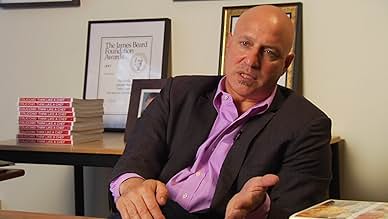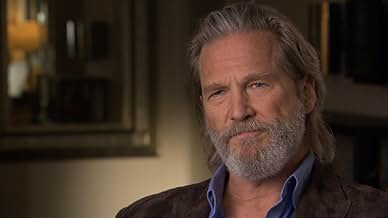IMDb RATING
6.9/10
1.2K
YOUR RATING
A documentary that investigates incidents of hunger experienced by millions of Americans, and proposed solutions to the problem.A documentary that investigates incidents of hunger experienced by millions of Americans, and proposed solutions to the problem.A documentary that investigates incidents of hunger experienced by millions of Americans, and proposed solutions to the problem.
- Awards
- 1 win & 2 nominations total
Jim McGovern
- Self
- (as James McGovern)
Featured reviews
Lori Silverbush and Kristi Jacobson's documentary "A Place at the Table" is a film that every politician - indeed, every citizen - in America should be forced to sit through at least once (or as many times as it takes to get the message to effectively sink in). It makes a very persuasive case that, contrary to what most people think, hunger is a major problem in the United States, a nation that prides itself on being the wealthiest in the history of the world. Not only does the movie provide the startling statistics necessary to back that assertion up, but explains why this is the case.
Silverbush and Jacobson build their case in a meticulous, logical fashion, beginning with the common, counterintuitive fallacy that hungry people necessarily equal thin people. The movie explains how obesity and hunger often go hand in hand, thanks to the fact that, since junk food is cheaper than healthy food to purchase, the poor often fill up on empty calories rather than the nutritious ones that would actually make them healthy. This is a result of a misguided federal policy that provides subsidies for agribusinesses (as opposed to mom-and-pop farmers), who turn their grain and corn into inexpensive processed foods. Since farmers who grow fruits and vegetables work more independently of one another, they don't have the clout necessary to receive similar government support. This leads to a vicious cycle that winds up hurting poor people in both urban and rural areas where "food deserts" arise in which residents can barely find a fresh fruit or vegetable to purchase.
The movie rightly celebrates the many charities that pick up some of the slack, but it makes the case that that is simply not enough, that an entire paradigm shift may be necessary if we ever hope to solve the problem.
Ultimately, what we discover is that hunger is merely a symptom of a much greater set of problems - which are poverty, income inequality and a political system rigged to benefit the wealthy and powerful at the expense of the indigent and disconnected. Above all, the key lies in both the public and private sectors providing a living wage for their workers.
Finally, beyond all the statistics, beyond all the comments by experts and authorities on the subject, it is the voices of the parents, who can't afford to put nutritious food on the table for their children, and of the children themselves, who often go to bed hungry or malnourished, who wind up making the greatest mark on our hearts. It is their testimonials more than anything else that will hopefully move the rest of us to action.
A must-see film.
Silverbush and Jacobson build their case in a meticulous, logical fashion, beginning with the common, counterintuitive fallacy that hungry people necessarily equal thin people. The movie explains how obesity and hunger often go hand in hand, thanks to the fact that, since junk food is cheaper than healthy food to purchase, the poor often fill up on empty calories rather than the nutritious ones that would actually make them healthy. This is a result of a misguided federal policy that provides subsidies for agribusinesses (as opposed to mom-and-pop farmers), who turn their grain and corn into inexpensive processed foods. Since farmers who grow fruits and vegetables work more independently of one another, they don't have the clout necessary to receive similar government support. This leads to a vicious cycle that winds up hurting poor people in both urban and rural areas where "food deserts" arise in which residents can barely find a fresh fruit or vegetable to purchase.
The movie rightly celebrates the many charities that pick up some of the slack, but it makes the case that that is simply not enough, that an entire paradigm shift may be necessary if we ever hope to solve the problem.
Ultimately, what we discover is that hunger is merely a symptom of a much greater set of problems - which are poverty, income inequality and a political system rigged to benefit the wealthy and powerful at the expense of the indigent and disconnected. Above all, the key lies in both the public and private sectors providing a living wage for their workers.
Finally, beyond all the statistics, beyond all the comments by experts and authorities on the subject, it is the voices of the parents, who can't afford to put nutritious food on the table for their children, and of the children themselves, who often go to bed hungry or malnourished, who wind up making the greatest mark on our hearts. It is their testimonials more than anything else that will hopefully move the rest of us to action.
A must-see film.
A PLACE AT THE TABLE (dir. Kristi Jacobson, Lori Silverbush) A brilliant documentary that confronts America's perennial inability to deal with the widespread problem of hunger in our nation. Ronald Reagan slashed federal programs that were beginning to solve the issue by the late 1970's, however he cynically felt that the matter would best be solved by relying on good old fashioned Christian charity. And it didn't work then, and it doesn't work now. Millions of Americans struggle daily with 'food insecurity' (you don't know where your next meal is coming from), and it seems that our leaders are convinced that the poor have it far too easy, and are just too dependent on the largess of the American tax payer. However, the film does expose the pertinent fact that America's richest food corporations were able to continue to enjoy 100% of their lavish federal government subsidy, yet the food stamp budget was severely cut to pay for a program to end childhood hunger. So much for our so called 'Christian' policies, and the film provides yet another reason for me to continue to be a proud secular humanist.
My wife and I downloaded this from iTunes today and were so impacted by the film. The film follows several people of different races and backgrounds, urban to the South to the mountains of Colorado. All are working (as the film goes on) but none make enough to buy enough food to be sure it will last all month. Many of them do not even qualify for food stamps/bridge cards. The fact that the poor and hungry have little lobbying impact in Washington compared to the gigantic agribusiness flood of money is clearly part of the reason we see this dilemma where the richest large nation fails miserably in keeping its working poor feed. Please see this film if you care about this issue. Many of your opinions may turn out to be misconceptions founded on stereotypes.
As for Marc Newman's criticism, the idea that charity organizations like food kitchens and food banks sponsored by churches (yes, those clips of devoted pastors and churches were kept in and were very impressive) could solve this problem is ludicrous. We are talking about 50 million people and 13 million children. As my pastor (who is VERY conservative) says... the problem is overwhelming. There is no way volunteer and charitable organizations can meet the demand, and for Mr. Newman to suggest it could makes me wonder if he has ever worked at trying to get food to the poor. Many of us have done so and we know how huge this problem is... far beyond the resources of the faith community. As was noted in this documentary, the government once before almost totally eliminated hunger (in the late 70's) when both Democrats and Republicans (including Ronald Reagan) made it a priority. The government could do it again if it desired.
As for Marc Newman's criticism, the idea that charity organizations like food kitchens and food banks sponsored by churches (yes, those clips of devoted pastors and churches were kept in and were very impressive) could solve this problem is ludicrous. We are talking about 50 million people and 13 million children. As my pastor (who is VERY conservative) says... the problem is overwhelming. There is no way volunteer and charitable organizations can meet the demand, and for Mr. Newman to suggest it could makes me wonder if he has ever worked at trying to get food to the poor. Many of us have done so and we know how huge this problem is... far beyond the resources of the faith community. As was noted in this documentary, the government once before almost totally eliminated hunger (in the late 70's) when both Democrats and Republicans (including Ronald Reagan) made it a priority. The government could do it again if it desired.
In 2008, the world was greeted with, what has been called, one of the most startling and frightening documentaries ever made. It was Robert Kenner's Food, Inc., an acclaimed, highly-regarded, Academy Award nominated account of the horribly corrupt, unsanitary practices of the American food industry. It was a film that told a lot of facts, but used much of its material as an effort to scare the American public, while presenting it as a problem with no conceivable solution. Also, its own talking point, about how America should overhaul its heavily-preserved, pesticide-ridden food in favor of a greener, more organic lifestyle, was one it didn't really back up. As a documentary as a whole, it did its job (to inform me as a viewer), and I was happy to have seen it. I just wished I had seen it when it was followed by a filmmaker Q&A where I could've asked those involved how did they expect the American people who were on welfare, minimum wage, and food stamps to convert to a life predominately consisting of organic food products?
And now, we have A Place at the Table, a documentary focusing on that same group of people, which has been depressingly expanding for years on end. We open with exterior shots of various big cities in the United States, before closing in on a smaller one, Collbran, Colorado a western, rural land comprised of humble, desperate folk who are struggling to make ends meet. We see a church organization member recall how when he started serving hot meals to the public, where anyone can come and eat for free, on Wednesday night, an unprecedented eighty to one-hundred and twenty people showed up. It was a large indication that many people in Collbran were not just desperate for frivolous things, but for something they can't live without.
We then expand to other various cities, such as Jonestown, Mississippi, one of the many American towns that suffers from food insecurity. That is when the public, or its townspeople, do not know where they next meal will come from. Think long and hard about where yours will. Mine will likely be a home-cooked meal, with meat, one or two sides, a salad, and a drink. Many Americans, even children, will be lucky to get one of those things.
Another term defined in the documentary is locations ominously called "food deserts," which are areas where places that carry healthy food packing nutrition, vitamins, and necessary fulfillment don't exist for miles on end, leaving the only resources to be from local stop-and-shops that stock up on food filled with unhealthy fats and empty calories. I was raised where a salad accompanied almost every meal, seemingly by law, not by choice. Seeing young children who have likely never eaten a radish, a cucumber, lettuce, or an onion in their lives is a stunningly upsetting.
Statistics are batted off quite frequently, saying that one in two children will grow up on food stamps in the United States, 30% of people suffer from food insecurity, and currently, over fifty million people in the United States are underfed and undernourished. One of the earliest statistics seems contradictory, but will come as no surprise after a few seconds; Mississippi is the most obese state in the country and it's also the most unfed. Vegetables, again, are difficult to access in many areas, so food that stocks gas station shelves like chips, Cheetos, cupcakes, and hot dogs and sausage that spend nearly half its time on a warming tray are usually what's for dinner. It's, too, widely known that people receiving government aid and food stamps can not afford to spend much of their cash on "luxury items" such as vegetables, because it needs to get them through the month. The government has long subsidized corn, soybean, and wheat products, and has neglected to back vegetables and nourishing products with the same political commodities, we're told. "For years, we've been subsidizing the wrong foods," says Marion Nestle, a food professor.
Just a few days ago, I was talking with a friend and spoke the thought that if we lived in a perfect world, wouldn't basic necessities such as food and clothing, in their simple sense, of course, be free to the public? Wouldn't thinks like milk, bread, and corn be available on a no-cost basis to the consumer. The key words were "in a perfect world." in the world we currently inhabit, prices are sky-rocketing for the stuff we should eat and plummeting on the stuff we shouldn't. You, dear reader, reading this review, send me a picture of a sign that boasts in big, bold primary colors vegetables for an amount equivalent to the price of a two-liter bottle of soda or a bag of Lays potato chips.
A Place at the Table, again, doesn't offer many solutions to this problem, but they are quick to point out what is currently being done in the favor of stopping hunger in a country where there's more than enough healthy food to go around. Food banks, charities, and pantries, which have increased from two-hundred nationwide to a whooping 40,000 in thirty years, have been turning up to temporarily combat the problem, but a functional, long term solution is still in the works. American actor Jeff Bridges, who is responsible for founding the organization called the End Healthy Network in efforts to assist starving kids and adults, poignantly states, "if another country was doing this to our kids, we would be at war. It's just insane."
Full review at http://stevethemovieman.proboards.com
And now, we have A Place at the Table, a documentary focusing on that same group of people, which has been depressingly expanding for years on end. We open with exterior shots of various big cities in the United States, before closing in on a smaller one, Collbran, Colorado a western, rural land comprised of humble, desperate folk who are struggling to make ends meet. We see a church organization member recall how when he started serving hot meals to the public, where anyone can come and eat for free, on Wednesday night, an unprecedented eighty to one-hundred and twenty people showed up. It was a large indication that many people in Collbran were not just desperate for frivolous things, but for something they can't live without.
We then expand to other various cities, such as Jonestown, Mississippi, one of the many American towns that suffers from food insecurity. That is when the public, or its townspeople, do not know where they next meal will come from. Think long and hard about where yours will. Mine will likely be a home-cooked meal, with meat, one or two sides, a salad, and a drink. Many Americans, even children, will be lucky to get one of those things.
Another term defined in the documentary is locations ominously called "food deserts," which are areas where places that carry healthy food packing nutrition, vitamins, and necessary fulfillment don't exist for miles on end, leaving the only resources to be from local stop-and-shops that stock up on food filled with unhealthy fats and empty calories. I was raised where a salad accompanied almost every meal, seemingly by law, not by choice. Seeing young children who have likely never eaten a radish, a cucumber, lettuce, or an onion in their lives is a stunningly upsetting.
Statistics are batted off quite frequently, saying that one in two children will grow up on food stamps in the United States, 30% of people suffer from food insecurity, and currently, over fifty million people in the United States are underfed and undernourished. One of the earliest statistics seems contradictory, but will come as no surprise after a few seconds; Mississippi is the most obese state in the country and it's also the most unfed. Vegetables, again, are difficult to access in many areas, so food that stocks gas station shelves like chips, Cheetos, cupcakes, and hot dogs and sausage that spend nearly half its time on a warming tray are usually what's for dinner. It's, too, widely known that people receiving government aid and food stamps can not afford to spend much of their cash on "luxury items" such as vegetables, because it needs to get them through the month. The government has long subsidized corn, soybean, and wheat products, and has neglected to back vegetables and nourishing products with the same political commodities, we're told. "For years, we've been subsidizing the wrong foods," says Marion Nestle, a food professor.
Just a few days ago, I was talking with a friend and spoke the thought that if we lived in a perfect world, wouldn't basic necessities such as food and clothing, in their simple sense, of course, be free to the public? Wouldn't thinks like milk, bread, and corn be available on a no-cost basis to the consumer. The key words were "in a perfect world." in the world we currently inhabit, prices are sky-rocketing for the stuff we should eat and plummeting on the stuff we shouldn't. You, dear reader, reading this review, send me a picture of a sign that boasts in big, bold primary colors vegetables for an amount equivalent to the price of a two-liter bottle of soda or a bag of Lays potato chips.
A Place at the Table, again, doesn't offer many solutions to this problem, but they are quick to point out what is currently being done in the favor of stopping hunger in a country where there's more than enough healthy food to go around. Food banks, charities, and pantries, which have increased from two-hundred nationwide to a whooping 40,000 in thirty years, have been turning up to temporarily combat the problem, but a functional, long term solution is still in the works. American actor Jeff Bridges, who is responsible for founding the organization called the End Healthy Network in efforts to assist starving kids and adults, poignantly states, "if another country was doing this to our kids, we would be at war. It's just insane."
Full review at http://stevethemovieman.proboards.com
It's a national disgrace than nearly 50 million of our American neighbors live in homes that can't afford enough food. This compelling film explains why we have this problem, and, most importantly, what we can do to end it. Granted, I am biased because I fight hunger for a living, but I do think everyone in America should see this film.
The film powerfully documents the real lives of real people struggling against hunger. Each of them defy common stereotypes of hungry people.
Many Americans believe that we can end U.S. hunger one person at a time, one donated can of food at a time. They are well-meaning. But they are wrong, as this powerful film proves. When Ronald Reagan entered office in 1981, there were only a few hundred emergency feeding programs in America, most of which were traditional soup kitchens serving mostly the people who had been historically the most hungry—single men with substance abuse or mental illness problems. Yet, as a direct result of the economic policies and social service cuts set in motion by Reagan, the number of emergency feeding programs in America skyrocketed, and continued to do so even after he left office. There are now more than 40,000 such programs in America, and roughly two-thirds of them are food pantries, where parents and their children, the elderly, and working people obtain free groceries. Meanwhile, hunger has soared. The truth is that these agencies simply don't have anything close to the resources needed to meet the demand. The organization I manage, the New York City Coalition Against Hunger, found that, in 2011, close to sixty percent of the approximately 1,100 soup kitchens and food pantries in the city were forced to ration food because they lacked resources, either reducing portion size, limiting hours of operation, or turning away hungry families. These agencies are so under-funded that nearly 50 of them were forced to close in New York City in just the last few years.
This vital film proves that the only way to truly end U.S. hunger is by advocating for fundamental change that include living wage jobs and a robust government safety net.
The film powerfully documents the real lives of real people struggling against hunger. Each of them defy common stereotypes of hungry people.
Many Americans believe that we can end U.S. hunger one person at a time, one donated can of food at a time. They are well-meaning. But they are wrong, as this powerful film proves. When Ronald Reagan entered office in 1981, there were only a few hundred emergency feeding programs in America, most of which were traditional soup kitchens serving mostly the people who had been historically the most hungry—single men with substance abuse or mental illness problems. Yet, as a direct result of the economic policies and social service cuts set in motion by Reagan, the number of emergency feeding programs in America skyrocketed, and continued to do so even after he left office. There are now more than 40,000 such programs in America, and roughly two-thirds of them are food pantries, where parents and their children, the elderly, and working people obtain free groceries. Meanwhile, hunger has soared. The truth is that these agencies simply don't have anything close to the resources needed to meet the demand. The organization I manage, the New York City Coalition Against Hunger, found that, in 2011, close to sixty percent of the approximately 1,100 soup kitchens and food pantries in the city were forced to ration food because they lacked resources, either reducing portion size, limiting hours of operation, or turning away hungry families. These agencies are so under-funded that nearly 50 of them were forced to close in New York City in just the last few years.
This vital film proves that the only way to truly end U.S. hunger is by advocating for fundamental change that include living wage jobs and a robust government safety net.
Did you know
- TriviaThe original title for this documentary was "Hungry in America."
- ConnectionsFeatured in Moyers & Company: United States of ALEC: A Follow-Up (2013)
Details
- Release date
- Country of origin
- Official site
- Language
- Also known as
- Mesto za stolom
- Filming locations
- Collbran, Colorado, USA(main location)
- Production companies
- See more company credits at IMDbPro
Box office
- Gross US & Canada
- $231,378
- Opening weekend US & Canada
- $92,257
- Mar 3, 2013
- Gross worldwide
- $231,378
- Runtime1 hour 24 minutes
- Color
- Aspect ratio
- 1.78 : 1
Contribute to this page
Suggest an edit or add missing content






































